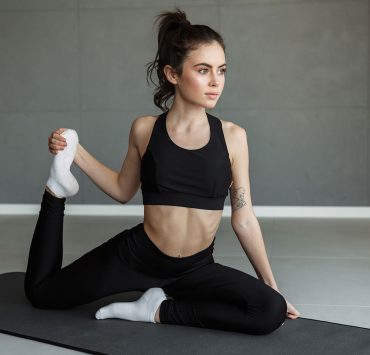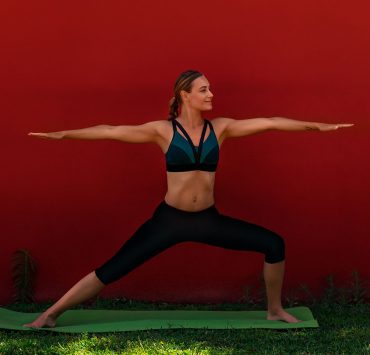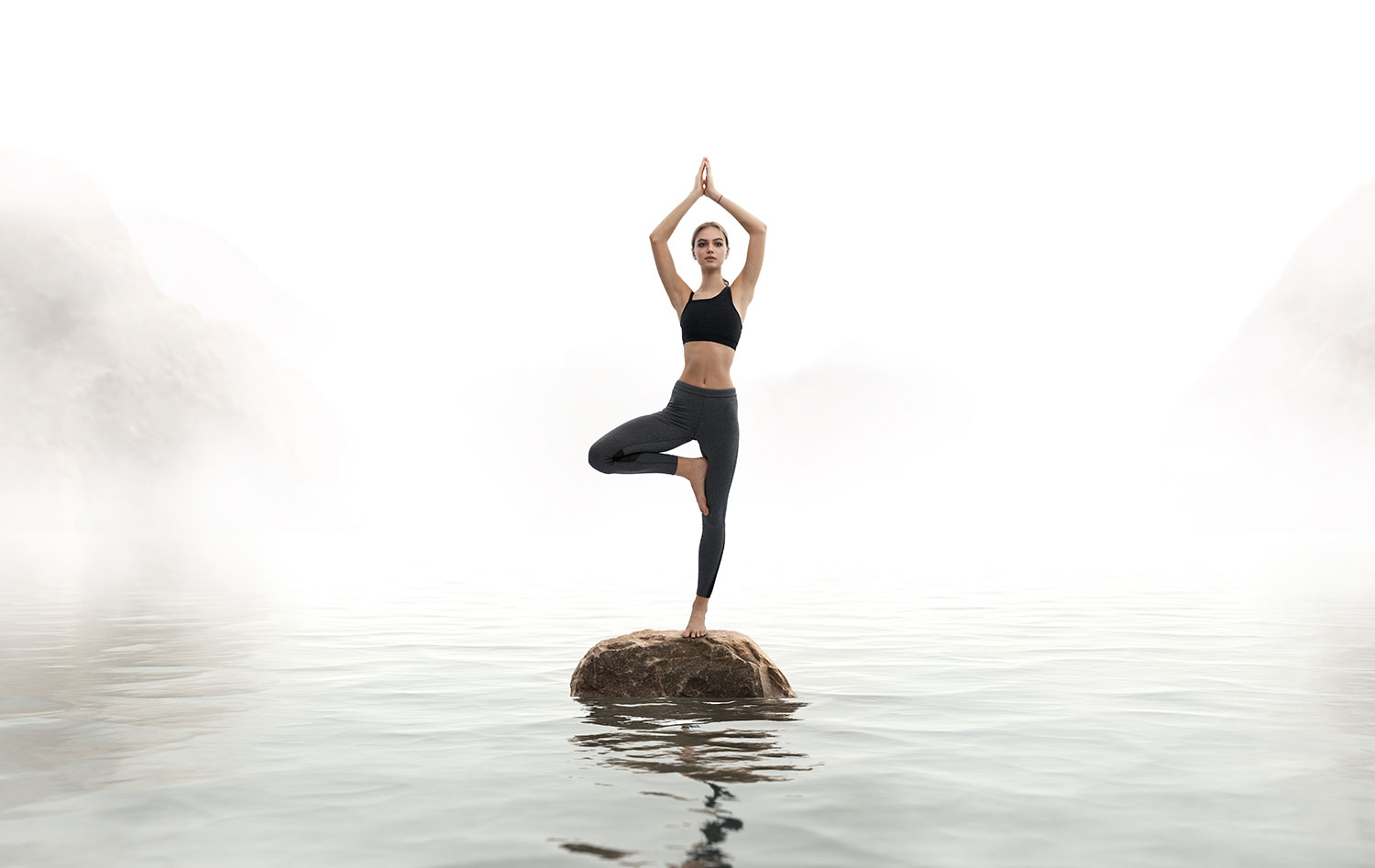
Having been a teacher’s assistant at over 50 yoga teacher…
Strength and balance are two common physical goals of a yoga practice. Certain styles of yoga provide students the opportunity to progress in both strength and balance.
While we do not use weights in yoga, there are plenty of opportunities to work on upper body, lower body, and abdominal strength using your body weight. Many of the postures in yoga are similar to positions that you create in your daily life. For example, a lunge in yoga is very similar to taking a long stride during a brisk walk. Working on your strength during your yoga practice will carry over into more strength and reduced risk of injury during your daily life.
Balance is a complex relationship between your vision, proprioception, and vestibular (inner ear) systems. In yoga, all three systems can be challenged.
Here are 10 postures that you can include in your yoga practice to improve strength and balance:
Adho Mukha Shvanasana – Downward Dog
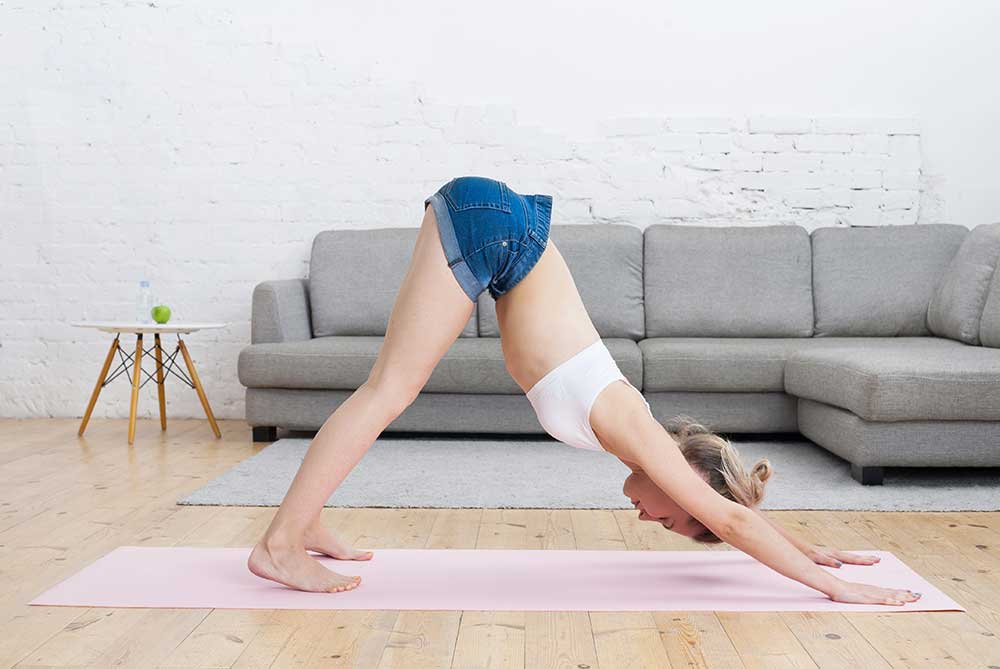
Begin in a plank position. Focus on pressing weight into the index finger and your thumb, and face your elbow creases to the front of your mat. Begin to pike your hips to the sky, creating a V shape with your body.
This position strengthens the triceps, mid back, and abdomen. Downward dog is an excellent option for building strength in your upper body and abdomen. Weight bearing through your upper body improves upper body strength and bone density.
The basic downward facing dog posture challenges your balance. There are variations to this pose that can further challenge your balance. Try closing your eyes and lifting up one foot into the 3 legged dog position. Or, reach one hand back to the opposite side foot to rotate the spine.
Anjaneyasana – Crescent Lunge
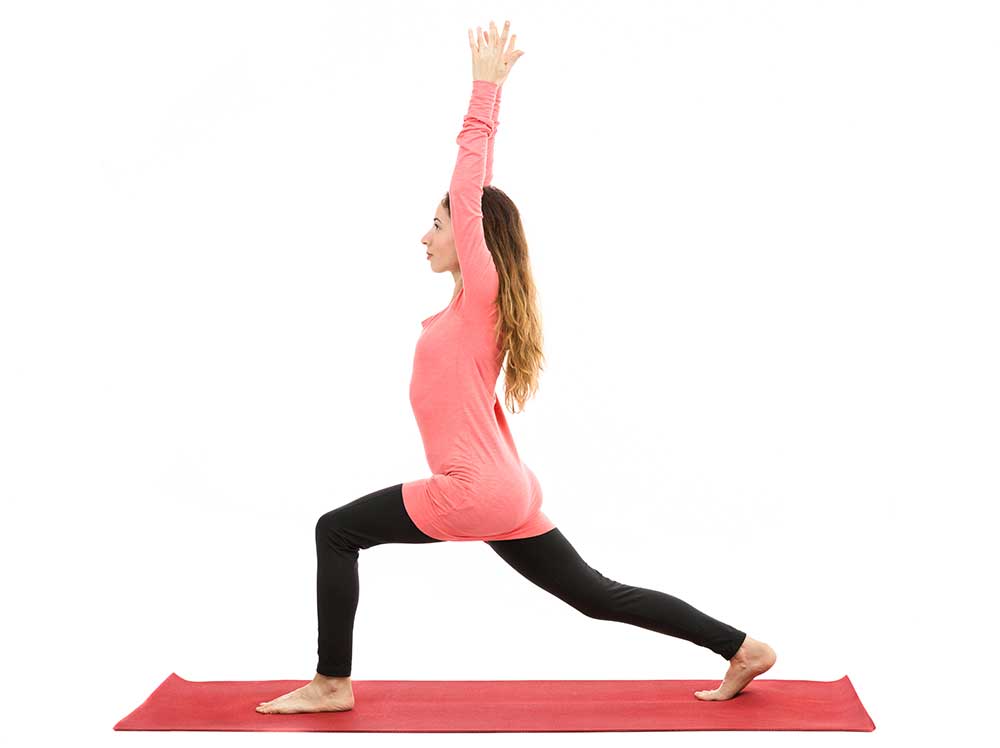
Begin standing, then step the right foot back. Keep the right heel high upon the ball mound of the toe, and the right leg straight. Begin to bend into the left knee so it aligns on top of the left ankle.
As you sink into this posture keep the feet in line with their respective hips. Engage the lower abdomen as you reach your fingertips to the sky. Hold for 5 breaths, then repeat on the second side.
Crescent lunge strengthens your front leg gluteal muscles and hamstrings, as well as the abdomen. This posture is very functional, as it simulates walking, running, and going up stairs.
Crescent lunge also challenges your balance, as the stance is staggered and relatively narrow. Further challenge your balance by closing your eyes, rotating your head, or adding dynamic upper body movement.
Parsva Balasana – Bird Dog
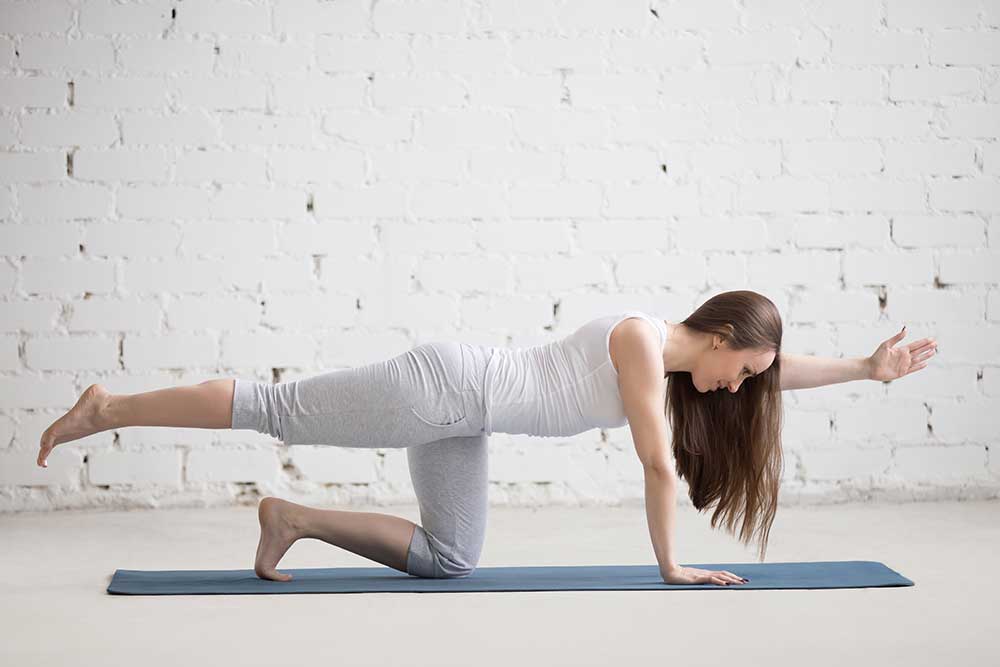
Begin in a tabletop position. Place your shoulders on top of the wrists, and the hips on top of the knees. The hands and knees are hip width apart, and the spine is neutral.
Press down into the index finger and thumb while facing your elbow creases forward, maintaining softness in the elbows to avoid locking out the joint. Activate the lower abdomen, and gaze straight down.
Maintaining this alignment, straighten your right leg back behind you, keeping it lifted off the ground. Ensure that your right toes are pointing down to the ground. Next, reach your left fingertips forward and balance. Hold for 5 breaths, then repeat on the second side.
This posture strengthens your tricep on the weight bearing arm, your mid back, and the abdomen. The weight bearing through the upper body is an excellent way to build bone density.
This is a challenging balance posture. If it is too difficult, you can lower the right toes to the ground, keeping the leg straight back behind you. You can also lower the left hand, and tent the fingertips instead of having a flat palm.
To challenge your balance further, you can close the eyes. You want to find a level of challenge where you feel a challenge, but avoid a challenge where you are falling out of the posture.
Eka Pada Tadasana – One Legged Mountain Pose
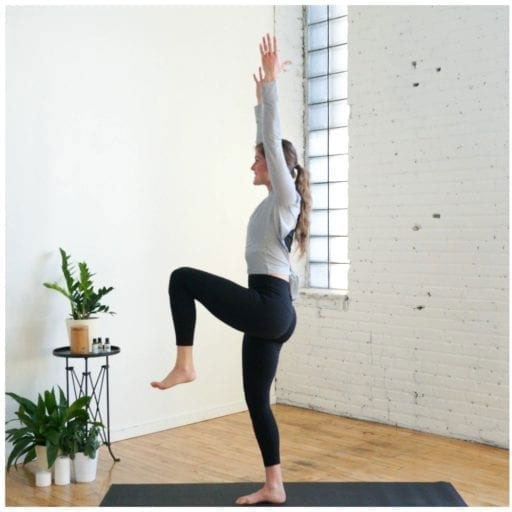
Begin standing with feet hip width apart. Hug the heels together so you activate the inner thighs and lift your arches, then tone up the quadriceps. Engage the abdomen, and stack the shoulders on top of the hips.
Maintaining your alignment above, begin drawing the right knee up to your chest. Hold for 5 breaths, then repeat on the second side.
Single leg tadasana strengthens the standing leg calf and gluteal musculature, as well as the abdomen. If you are focusing on your upper body posture, you can also strengthen the mid back by squeezing the shoulder blades together. You are on one leg during many daily tasks, including walking and running. Working on this posture during your yoga practice can make you stronger during your daily life.
If standing on one leg is too challenging, use tip toes instead of lifting the foot. You can also hold onto a chair or a wall.
If you feel that you can further challenge your balance, try closing your eyes. You can also work on looking right and left, and even up to the ceiling for an additional challenge.
Virabhadrasana 3 – Warrior 3
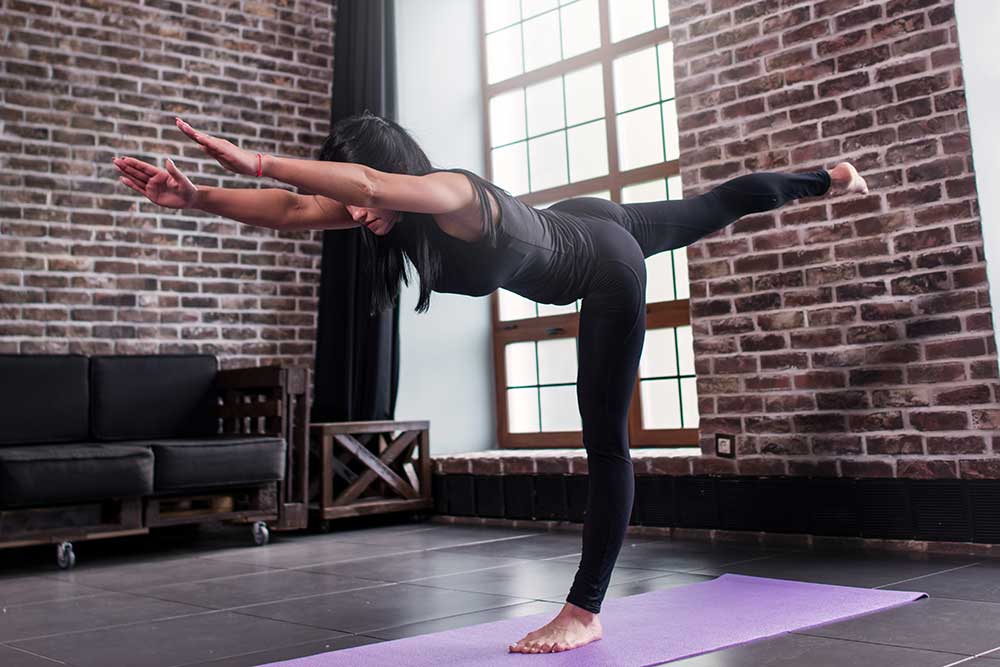
Find single leg tadasana, as described above. Place your hands on your hips, then begin to press the right leg straight back behind you as you lean your torso forward so it is parallel to the ground.
Encourage the right side of your body to stay in line with the left. The tendency is for the right side to be elevated in comparison to the left, which takes away the strength gains that you are trying to build.
Keep the shoulders lifted away from the ground, and maintain the engagement of your abdomen. Your hands can remain on your hips, or you can reach behind or out in front of you. Hold for 5 breaths, then repeat on the second side.
This posture strengthens your calves, hamstrings, glutes, and abdomen. Depending on your arm position, you may also be strengthening your mid back. If single leg tadasana is easy for you, Warrior 3 is a great way to progress your single leg strength.
If Warrior 3 is too challenging, use tiptoes instead of lifting the leg, or hold onto a chair for balance.
To add more of a balance challenge, try closing your eyes. You can also work on alternating between single leg tadasana and Warrior 3 for a dynamic balance challenge.
Vasisthasana – Side Plank
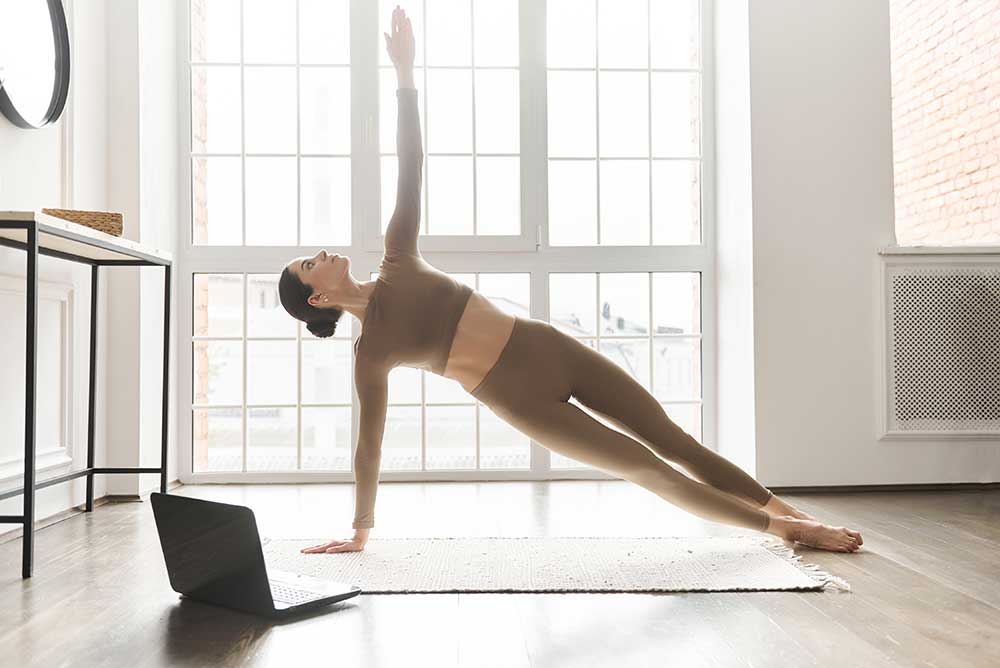
Begin in a plank position. Roll your heels to the right, placing the left foot on top of the right. Place your left hand on your hip and open up the torso so your left side stacks on top of the right.
Ensure that your right shoulder is in line with the right wrist. Keep the index finger and thumb pressed into the ground as you face the elbow crease forward, maintaining softness in the right elbow joint. Keep lifting up the hips away from the ground, avoiding letting the side of your right leg rest on the ground. Hold for 5 breaths, then repeat on the second side.
We move in three planes of motion and have so far been talking about postures in the sagittal plane (meaning moving forward and back.) Side plank is great for building strength into the frontal plane of motion (side to side). This posture strengthens your obliques, along with your peroneals, gluteus medius, mid back, and your triceps.
Balancing on one hand can definitely be challenging. To make this posture easier, you can lower the bottom knee down to the ground to modify.
For a greater balance challenge, you can try closing your eyes. You can also lift up your top leg.
Parivrtta Utkatasana – Twisted Chair
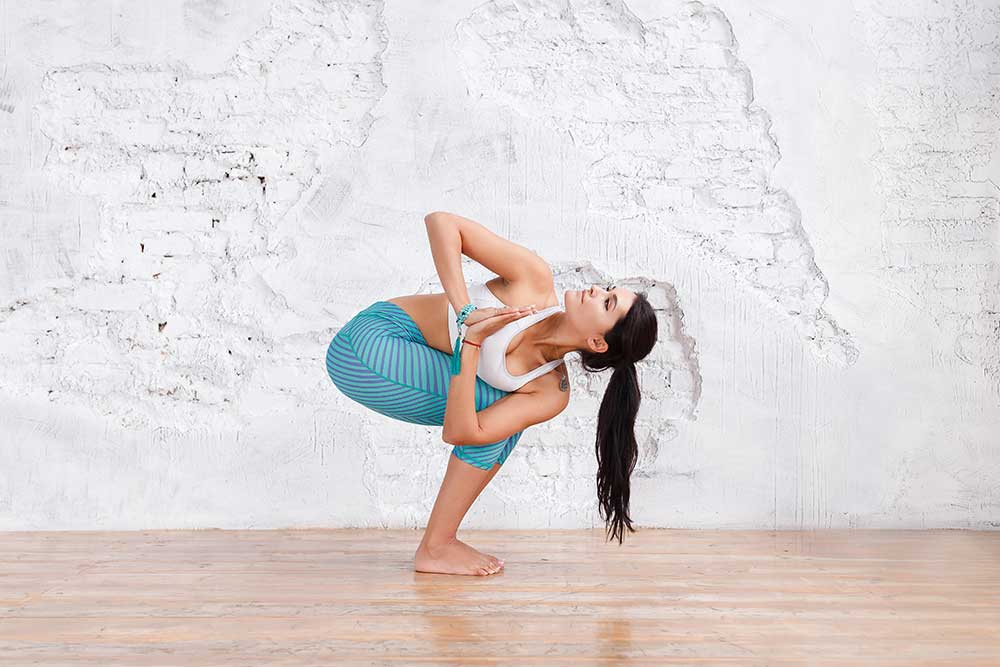
Begin standing with the feet in a narrow stance. Bend the knees, sinking the hips back. Keep the knees aligned between the second and third toe of their respective foot.
Draw the hands to the heart center. Twist the body to the right so you rest the left elbow on the right knee. Gaze up over your right shoulder. Hold for 5 breaths, then change sides.
This posture works your strength in the rotational plane of motion. Twisted chair will strengthen your quadriceps, hamstrings, glutes, transverse abdominis, and obliques.
To regress the balance challenge of this posture, keep the gaze straight forward. You can also open up the arms into a T shape instead of resting the elbow on the knee.
To progress the balance challenge, you can close your eyes, or practice lifting up one foot off of the ground.
Pincha Mayurasana – Forearm Stand
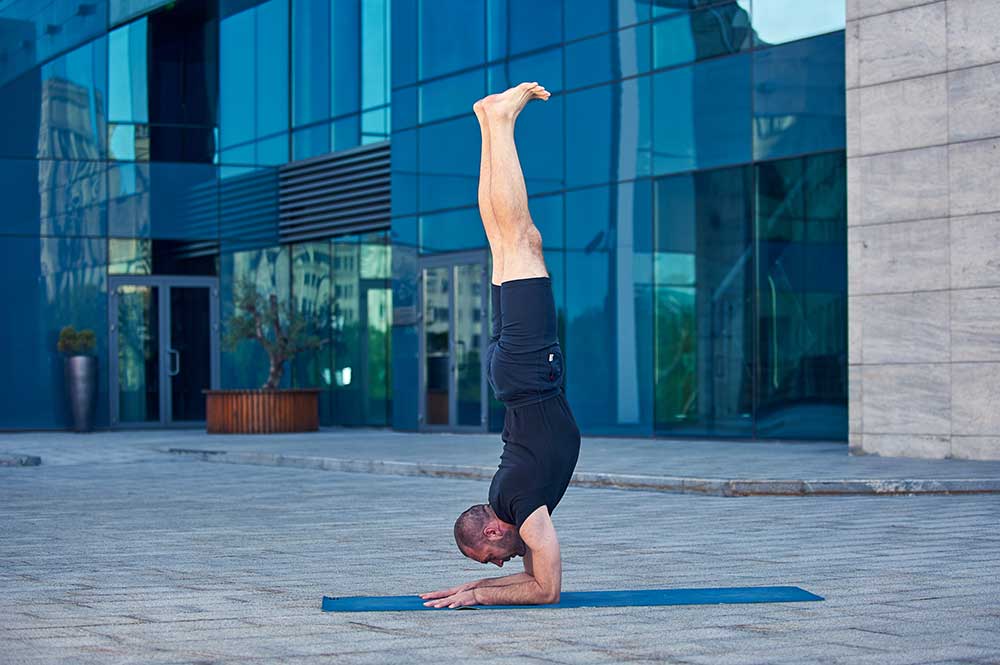
Begin in a forearm plank. Keep your wrists in line with the elbows, with the elbows shoulder width apart. Start walking the feet in towards your elbows so you create a V shape in your body.
Engage the belly, pulling one knee into your chest. Once you feel balanced, pull the other knee into your chest so you are only balancing on your forearms. Finally, straighten out the legs, pressing the soles of the feet to the sky. Hold for 5 breaths, then carefully lower down the same way you entered the posture.
Forearm stand strengthens the mid back and serratus anterior. It also challenges your abdominal strength.
This posture is very challenging on your balance. We don’t often balance on our arms during the day, so the proprioceptors in your upper body are not as conditioned to balance in comparison to the lower body. To work your way into the pose, you can practice just holding in the V shape (dolphin pose). You can also rest your heels on the wall for balance support.
Paripurna Navasana – Boat Pose
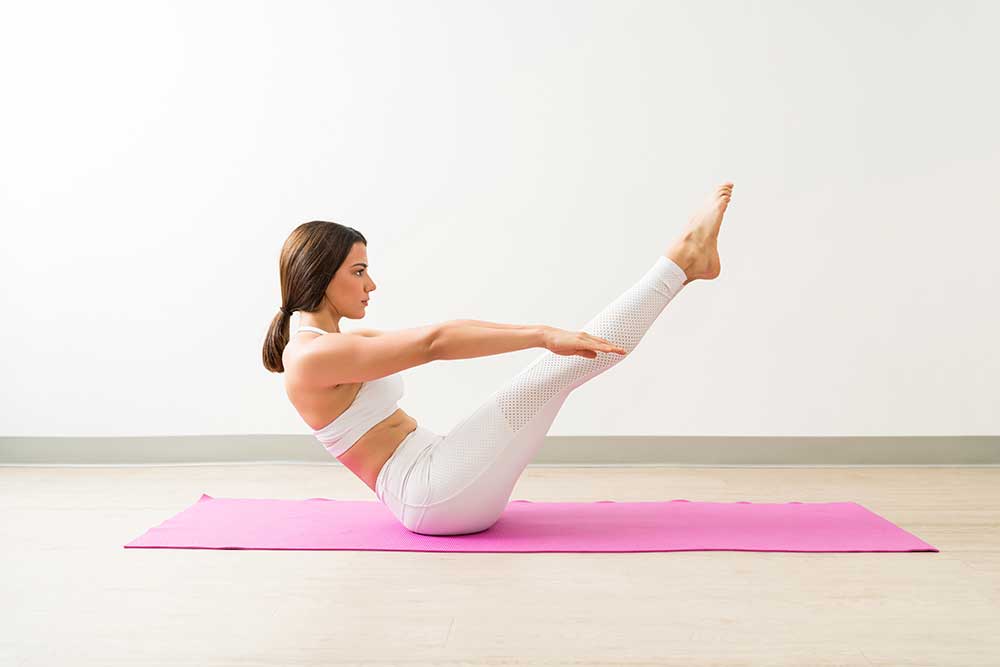
Begin in a seated position with the knees bent and feet out in front of you. Place the inner thighs together and begin leaning the torso back to a 45 degree angle.
Lift up your feet as you reach the fingertips up towards the sky. Keep your shoulders relaxed and an upright posture through the spine. Hold for 5 breaths.
Boat pose works on strengthening the abdomen and the mid back, as your arms are overhead. Avoid feeling too much engagement in the hip flexors. Boat pose will help increase your core strength, which is essential for a healthy spine and injury prevention.
Balancing on your sit bones (ischial tuberosity) can be challenging as you work on strengthening your abdomen. Place your feet on the ground if you need to make the posture easier.
To further challenge your balance, try closing the eyes or rotating the head.
Utthita Hasta Padangusthasana – Extended Hand to Big Toe Posture
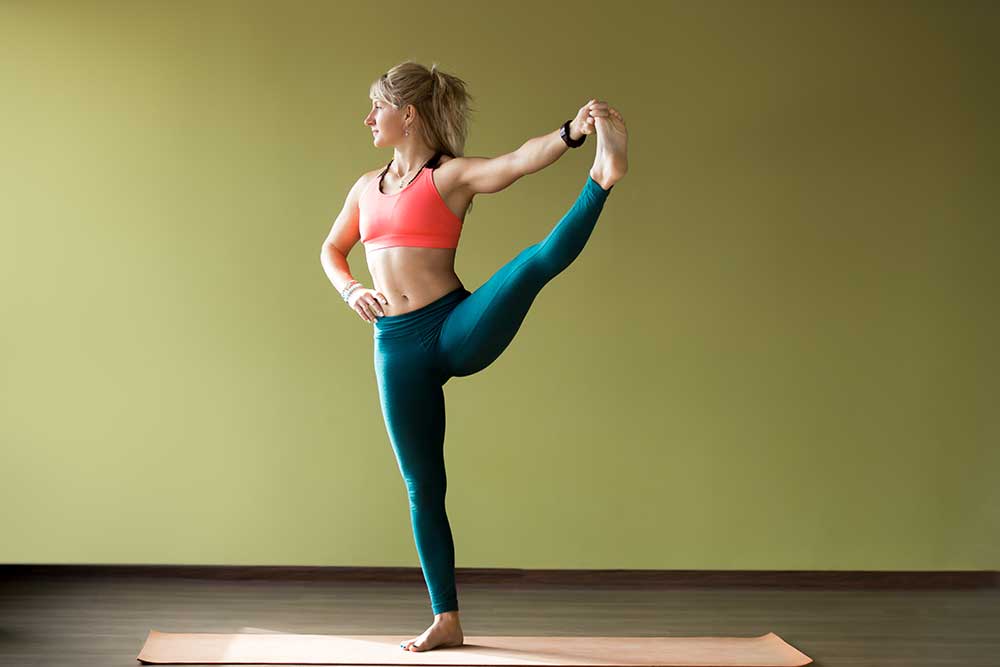
Begin in a single leg tadasana with the right foot off the ground. Hook your right fingertips around your right big toe, then straighten out the right leg in front of you. Keeping an upright posture, begin opening up the right leg over to the side. Gaze over the right toes. Hold for 5 breaths, then change sides.
This posture is another strength challenger in the frontal plane. You will feel the standing leg calf and gluteal muscles working, with the lifted leg hip flexors, quadriceps, and gluteus medius strengthening.
To make this posture less challenging on your balance, you can keep the knee bent. You can also keep the gaze straight forward.
To further progress your balance in this posture, you can close your eyes. You can also practice moving your gaze around.
Include the above positions into your home practice to improve your strength and balance. Improving your muscle strength will provide greater support to your skeletal structure, reducing your risk of arthritis. Strengthening your muscles will also reduce your risk of tendon and ligament based injuries.
Improving your balance is essential for reducing your risk of falls as you age. Having a strong sense of balance will also improve your sports performance and agility during your daily life.
Aim to work on strength and balance postures three times a week for the best results.
What's Your Reaction?
Having been a teacher’s assistant at over 50 yoga teacher trainings worldwide, Olivia May has a firm grasp on the fine art of yoga and meditation. In her work, she carefully reflects on a vast expanse of knowledge to help others find peace in both body and mind.






